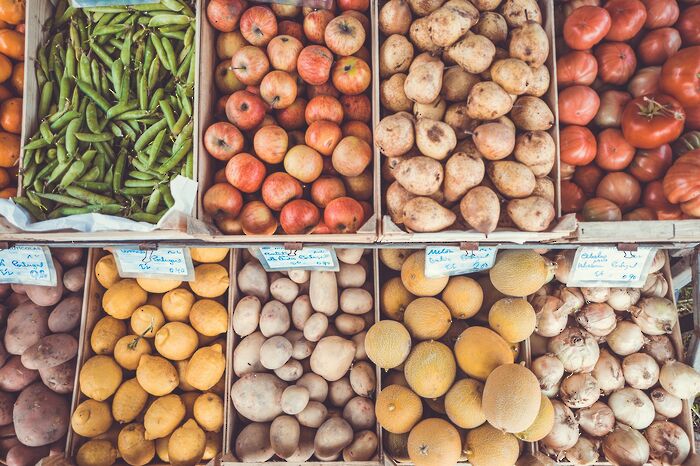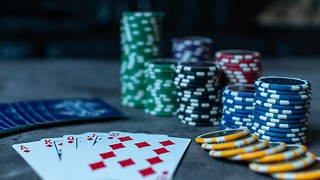The Great Pacific garbage patch
Sophie Cook explores the crisis of plastic pollution in the world’s oceans, and what might be done to solve it

It is estimated that the surface waters of our oceans contain 5 trillion plastic particles. Global circulation and ocean currents corral this debris into foci at the centre of sub-tropical gyres, from which they cannot escape. Five such gyres exist – the largest of which has come to be known as ‘The Great Pacific garbage patch’ (GPGP). Contrary to popular belief, this is not actually a solid ‘garbage island’, but a vast area of ocean where a huge amount of plastic waste is concentrated. The area covers 1.6 million square kilometres, equivalent to almost three times the size of France. It is thought that of the total 5 trillion plastic particles, more than 1.8 trillion are found here. Weighing in at a total of 80,000 tonnes, it is roughly equivalent to the mass of 500 jumbo jets; or in Cambridge terms – 4 million bicycles!
The density of plastic gradually increases towards the centre of the GPGP. Here, there are hundreds of kilograms of plastic per square kilometre. The patch has been studied since the 1970s, but more recently ‘The Ocean Cleanup’ project was launched, aiming to actively tackle this constantly expanding pile of human detritus. Each year, between 1.15-2.41 million tonnes of plastic drain out of rivers and into our oceans. It is thought that 80% of ocean plastics originate from terrestrial sources, while the remaining 20% come from marine activities. Due to highly variable ocean dynamics, this distribution is not uniform. 46% of the GPGP by mass is made up of fishing gear including nets, ropes and lines. These ‘ghost nets’ are perilous traps which regularly ensnare both marine life and seabirds.
Between 2013-15, The Ocean Cleanup set out to quantify the scale of the GPGP. They deployed 30 boats, 652 surface nets and a plane equipped with advanced sensors and cameras. All this allowed them to measure the plastic content and composition present in the area, in order to understand the magnitude of the problem. They found that 94% of the individual plastic particles were so-called ‘microplastics’ (objects smaller than 0.5cm), while 92% of the debris by mass were objects larger than 0.5cm.
"Our plastic legacy will forever be visible in the sedimentary record"
The GPGP has huge implications for both marine ecosystems and human health. The researchers found that there is 180 times more plastic debris than common prey species in the upper few metres of the GPGP. This makes it far too easy for surface feeders such as seabirds and turtles to mistake plastic for food. Sea turtles caught in and around the GPGP were found to have diets consisting of up to 74% plastic by dry weight. In addition to the plastic itself, 84% of plastic samples were found to contain at least one bioaccumulative toxin. The bioaccumulation of microplastics and their associated toxins up the food chain is a major concern – not only for marine communities, but in the fish and shellfish on our own dinner plates.
The UN estimates that the environmental damage to marine ecosystems caused by ocean plastics totals around $13 billion US dollars. It is estimated that by 2050, there will be more plastic in the ocean than fish. Plastic bottles take 450 years to fully biodegrade. For fishing lines, that figure goes up to 600. This problem is not going to go away, even if we stop producing plastic tomorrow – the damage done is already too great to ignore.
So, what is being done to fight back? The Ocean Cleanup project has developed a large barrage system capable of collecting vast quantities of plastic quickly and efficiently. The first prototype was tested in the North Sea in 2016, and in September last year, they launched ‘System 001’ into the North Pacific. Their aim is to achieve full-scale system functioning by 2020. If successful, this technology has the potential to remove 50% of the GPGP within five years. The need for action is mounting, as larger debris becomes much harder to collect once it breaks down into microplastic. It is thought that huge volumes of microplastics have already been deposited in deep sea sediments, reinforcing the idea that we are now living through the ‘Anthropocene’, a new geological period marked by drastic human impacts. Our plastic legacy will forever be visible in the sedimentary record.
But this doesn’t have to continue. Everyone can do their bit. In the UK alone, we use 35 million plastic drinks bottles per day, with Londoners being the main culprits. You don’t have to be part of this. Carry your reusable bottle with pride, do your best to recycle, and to all my fellow NatScis – use those pipette tips sparingly!
 Features / Should I stay or should I go? Cambridge students and alumni reflect on how their memories stay with them15 December 2025
Features / Should I stay or should I go? Cambridge students and alumni reflect on how their memories stay with them15 December 2025 News / Cambridge study finds students learn better with notes than AI13 December 2025
News / Cambridge study finds students learn better with notes than AI13 December 2025 News / Dons warn PM about Vet School closure16 December 2025
News / Dons warn PM about Vet School closure16 December 2025 News / News In Brief: Michaelmas marriages, monogamous mammals, and messaging manipulation15 December 2025
News / News In Brief: Michaelmas marriages, monogamous mammals, and messaging manipulation15 December 2025 Comment / The magic of an eight-week term15 December 2025
Comment / The magic of an eight-week term15 December 2025









